The promise of new flavours beckons from Banawe.
My COVID-19 Repatriation: Steps for Non-OFWs Travelling Back to the PH
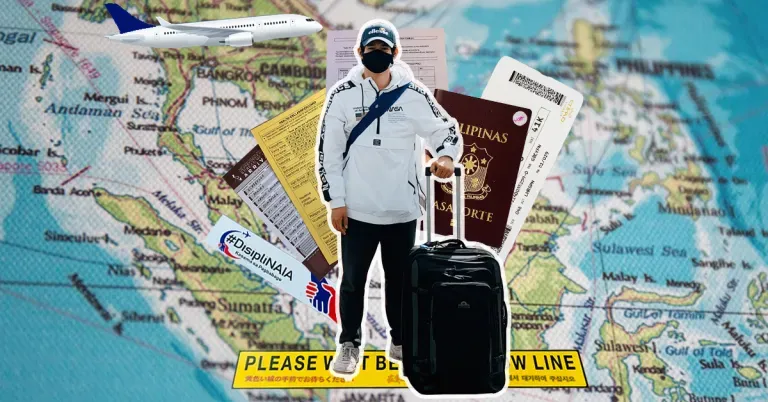
More than 100 days passed since my supposed departure day from London on 28 Mar 2020; due to COVID-19, my flight was cancelled and rebooked multiple times. My London trip was supposedly a vacation with my girlfriend Mikee, but we ended up cancelling half of our trip before we got stranded in a foreign country. (We shared our story here.)
It wasn’t until 1 July that travel restrictions finally started to ease in some countries. I was excited since I would finally see my family again, yet sad to leave Mikee in London. It was hard to comprehend the feeling that I felt on the day of my COVID-19 repatriation flight to the Philippines; I was so anxious about my trip going home. I even jokingly said that never in my life had I been so scared to board a plane. After four months, I would have to leave the place that sheltered me and the people that I shared my life with.
My COVID-19 repatriation to the Philippines: From London to Baler
First leg: London to Abu Dhabi
Before the departure date of my COVID-19 repatriation flight to the Philippines, I had to register and fill out the e-case investigation form (e-CIF) on the Red Cross website with all my details and the flight information. They said that this would make the transactions faster during the swab testing in Manila. They also gave me a QR code to present during the journey, and a passcode to my account so that I could access my information anytime.
On the day of my flight, I finished packing my 29.5 kilograms of luggage in a medium-sized suitcase. (Don’t ask me how I managed to do it — it’s a special skill. Just kidding!)
At the airport
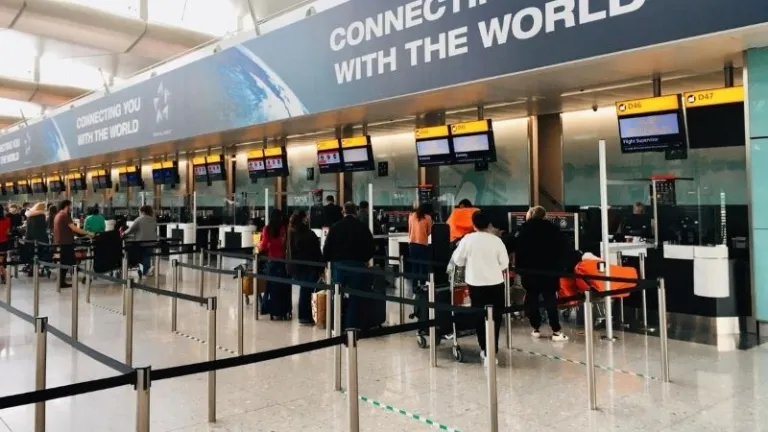
As I entered the airport, it smelled like disinfectant and alcohol all over the place. It was quiet, queues were minimised, and everything looked like it was moving in slow-motion. It felt different, like everyone was vigilant and careful, and staff was always cleaning every space they could.
Moreover, as I entered the terminal, it was a smooth experience since there were only a few people; only passengers are allowed at the gates. There was no queue for the airline that I would be boarding, so it just took me around 10 minutes to check in my baggage.
Then, in the security departure, there were no immigration officers to talk to. Only barcodes were needed to pass the gate. As for the checking of baggage, it was my first time to have to remove my shoes for checking; I also had to pass through a body scanner and undergo pat-down screening by security.

Moving forward, as I entered the last stop, hand sanitiser and water refilling stations were everywhere; social distancing and other visual cues were also present, even in the seats. Some stores were open, but limited the number of persons inside at one time. The once busy and noisy area was now quiet and sad.
Boarding the plane
Currently, airlines are also using a zoning system to avoid long queues. During my boarding time, face masks needed to be removed during boarding for verification purposes, but they recommend flipping the passport to the info sheet.
As I was walking to the plane, health ambassadors were also visible, checking the temperature for each passenger using thermal guns. I overheard the health ambassador saying, “Hi kids, I am just going to take a picture of you. Is that okay?” This was so the kids would not be afraid of the new procedures being implemented. The ambassador also was the first person that I saw smiling and cheering everybody on. He did rounds for each passenger, asking if we were alright; and if we were not feeling alright, to just let him know.
During the pre-departure briefing, a short video was also shown on the entertainment screen, showing what they do every time they fly, including cleaning and sanitising the plane.
On the plane

As we entered the plane, social distancing was being practised, and the cabin crew was in complete safety uniform. They gave us travel essential wellness kits that included face masks, alcohol gels, and hand masks. They also gave each of us a pair of earbuds rather than the previous set up, wherein a headset would be attached to each seat.
Meals were also provided, and they were very abundant; they even gave us another set. I don’t know why, but maybe it was because there were only a few people in the plane and it would have been a waste, so they might as well give it to us.
The windows in the airplane are different now. I don’t know if this has to do anything with safety, but you don’t need to touch it to dim; it will automatically dim itself. Toilets have sensors too, so you don’t have to touch anything. They also recommend not waiting in the queue, and instead just wait till the restroom is no longer occupied.
It was going to be an 11-hour journey, so it was a good thing that I had an entire row to myself. It is very comfortable, like a business class seat. But the challenge would be wearing a face mask for the entire journey. I hoped this trip would be easy for me the entire time.
Second leg: Abu Dhabi to Metro Manila

As expected, the second leg of my COVID-19 repatriation — a connecting flight from Abu Dhabi to Manila — went smoothly. I just walked through the thermal scanner and the security; and after that, I was walking towards the gate, where a huge amount of Filipinos were also going home. Because of this, boarding took about an hour.
Social distancing was also performed; but unlike the earlier flight, only one seat apart. Before the flight, the cabin crew sprayed disinfectant on the plane. Health declaration forms were also filled up before leaving the plane, and a representative from the task force collected these.
DisipliNAIA: Step-by-step procedure for returning overseas Filipinos

After nine hours of travel, disembarking started. Earlier, the crew said that they would make sure of social distancing and allow everyone to disembark one by one; but this didn’t happen. Everyone was outside the plane after 15 minutes.
We walked in a single file for thermal and facial scanning. They required everyone to remove face shields, caps, hoods, and glasses; only masks were allowed. The coast guard made us file a column of four and waited for almost 15 minutes for the passengers to fall in line.
Briefing
They said that we had to wait for the remaining passengers; but because we were too many, we proceeded to the briefing room for about an hour. This included announcements from DSWD, free swab testing, and depression and anxiety consultation.
At the briefing room, they also started checking the minors for documents to avoid child trafficking; the coast guard also proceeded to count the OFWs from sea-based to land-based, and the non-OFWs. This counting takes time, from group counting to one-by-one counting. Everyone is also asked to register with the e-CIF for the barcode. This procedure would be shortened if everyone already registers this prior to their arrival.
After an hour, senior citizens, pregnant women, and parents with minors were called and started the first stage of the process. After 30 minutes, all the remaining passengers were called and transferred to the waiting room for the first step of the process.
Swab testing
We were all waiting in the room, and other OFWs were all waiting for their respective agencies; as for non-OFWs, we proceeded first. For the confirmation and barcoding, this includes a short interview regarding your health status for the past few weeks. They will give you six bar code stickers, and one barcode will be attached to your passport for you to give to the swabber.

After 15 minutes, I did my swab testing. I gave my passport and the remaining bar code sticker. In the waiting room, they show an infomercial of the steps and inform you that the swab testing will not hurt; but I almost cried because of how much it hurt. They will swab you three times, twice in the nose and once in the throat.
After five minutes, swab testing was done and I proceeded to immigration. No interview was done; all they did was to check my passport and the barcode attached. Then, I picked up my luggage.
Quarantine facility assignment — the long wait
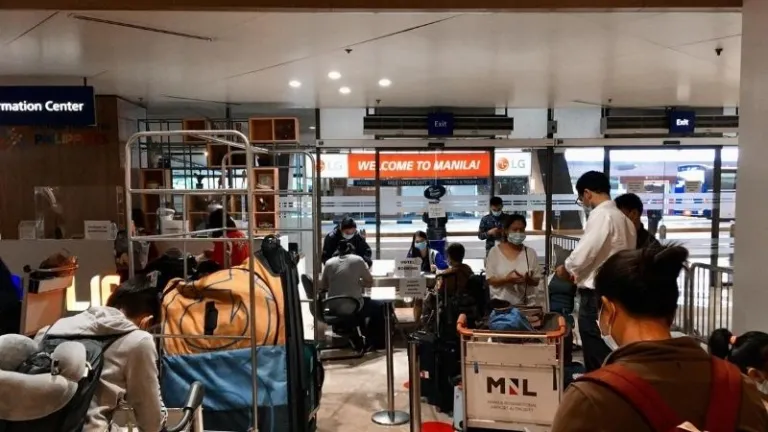
This step took me almost an hour and a half. OFWs proceed to OWWA Help Desk, while non-OFWs go to the Department of Tourism Help Desk. By this time, you will be starving, but good thing the DOT provides some ion drinks and snacks.
Also read: Here’s What “New Normal” Will Look Like in NAIA
Booking your hotel
You can check out the accredited quarantine hotels prior to your travel by messaging the Department of Tourism Facebook page; they reply fast. This might be useful if you want to find an affordable hotel, since they get fully booked quickly. You can book hotels depending on the location you want to go (Manila, Pasay, Quezon City, Makati, San Juan, Pasig, Parañaque, Taguig, Muntinlupa, Caloocan, or Mandaluyong).
For returning Filipinos, please be kind to the staff assisting us, as they are already exhausted from working tirelessly with a lot of people.
Booking your transportation
This process took me 30 minutes because this needs an affidavit of undertaking. While waiting for my name to be called, I tried to withdraw some cash from the nearest ATM. You will need this to pay for your taxi, hotel, food, and other miscellaneous things.
When your mode of transportation is ready, you will be escorted by the coast guards to your assigned vehicle. You will be asked to choose between a metred airport taxi or a coupon taxi; choosing the latter will guarantee you a fair price, since it was LTFRB prescribed rates within Metro Manila.
On the way to the hotel, the driver offered me a point-to-point service from my hotel to my house in Baler after my quarantine here in Metro Manila. He said they are accredited by DOTr and have complete documents needed. Price depends on the location, and for my case (Quezon City to Baler), it ranges from ₱7,000 to ₱8,000 including the toll fees.
Mandatory hotel quarantine after COVID-19 repatriation — be ready!

After almost an hour’s drive, I made it to the hotel. I checked in, paid for my three-night stay, and deposited money in case I would order food online. Once you enter your room, you can’t go out until the release of the swab result. You can order food online, or a member of your family can drop off food for the receptionist to give to you.
The next day, I got back to work. I preferred working rather than waiting in agony for the swab result. Then came the weekend. I allotted this time to researching and arranging how to get home to my province, non-stop calling and searching for the right numbers of LGUs and government agencies. This was the hardest part, because it felt like you were passed from one government agency to another until you were finally speaking with the right one.
Acquiring your swab test results
As for my swab test, they said to wait for the result on the Facebook page of Philippine Coast Guard, but I found out that it was faster on the Red cross website. It took five days for my results to come.
If you already know the result from the Red Cross website and the documents were not yet sent to you, you can call the Red Cross hotline (02 8 790 2300). They will ask you to email some information (to resultplease@redcross.org.ph); and in less than five minutes, the Molecular Laboratory Certification will be sent to your email. If you do not make a call, you will have to wait approximately 12 hours for the email, based on my experience.
Now, this document can also be used as your quarantine certificate; but in case your province requires you to present the Bureau of Quarantine Certificate, you have to sign up on their website and wait for the certificate to be generated. Or, if you have the swab result already and the certificate fails to generate, call them using this number: 53187500.
Note: In case you need to extend your hotel stay, the receptionist said that this should be called before 11am. This is the time that they collate all the information needed for them to call DOT regarding extensions of quarantine.
Third and final leg: Metro Manila to Baler, Aurora Province
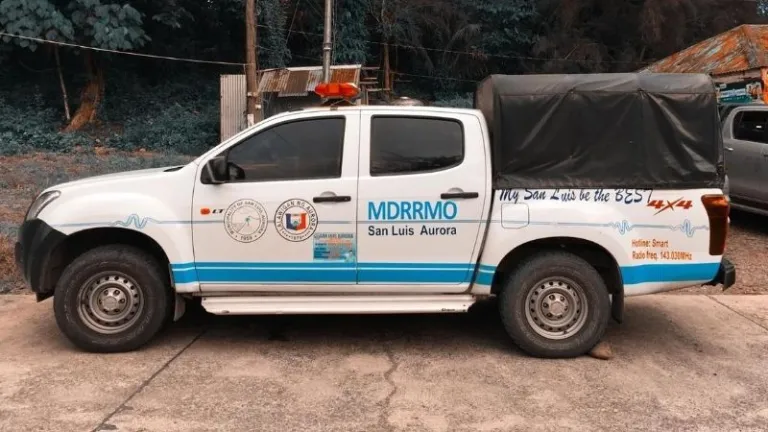
I was lucky that San Luis, one of the LGUs in Aurora, provides a service to help returning overseas Filipinos and Locally Stranded Individuals (LSI) get from Manila to San Luis and vice versa. I managed to contact them and ask if I could hitch a ride after they dispatched some of the departing OFWs to the airport.
That evening, I wasn’t prepared to go home because I knew that the driver would take a rest and that we would drive at dawn. But before going to bed, I got a call from the driver asking where I should be picked up. I rushed to pack my things and called the receptionist to let the hotel know that I would be checking out within an hour.
Once you get out of the hotel, you cannot go inside again. The driver arrived, and we had to pick up one LSI who was also arriving from abroad. After almost six hours of driving, we arrived at the border of Aurora (Canili Checkpoint) for checking of documents and approval for entry. If you don’t have the required documents, you have to undergo the mandatory 14-day quarantine at the border.
In my case (a returning overseas Filipino and negative for COVID), I had to travel straight from the hotel to my home in Baler. According to the provincial doctor, this was so that exposure to other suspected people would be minimised. We then went to the Municipal Disaster Risk Reduction and Management Officer (MDRRO) of San Luis Aurora for verification and briefing, after which I was transferred to Baler MDRRO to submit my documents. Lastly, I went to the barangay to register myself for the home quarantine monitoring.
Home sweet home: Lessons learned from my COVID-19 repatriation
As of writing, I have already finished my mandatory home quarantine. The first thing I wanted to do was to see the beach once again. The sound of the waves and the gust of the wind in my face always calms my soul and mind.
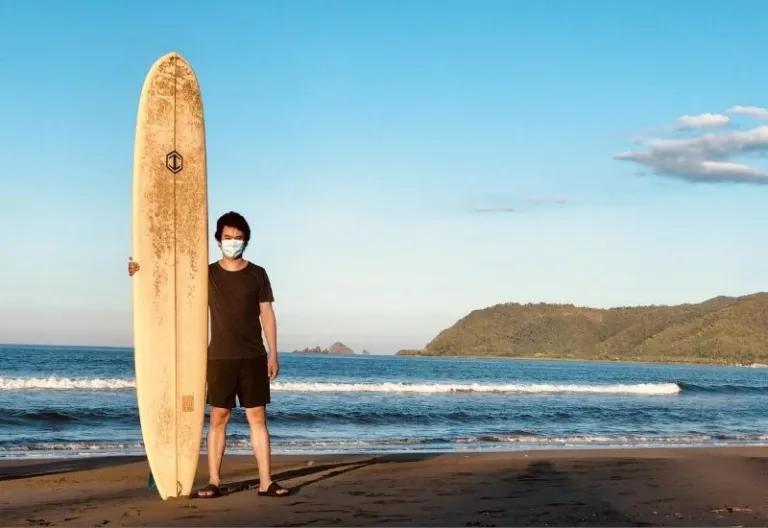
This experience made me realise that at some point, you may feel like you’re all alone in the process; but keep in mind that there are still people who care for the welfare of other people. During my COVID-19 repatriation experience, I truly appreciated those who undoubtedly supported me emotionally throughout the journey. To my friends, I will forever cherish the help and kindness you’ve shown to me.
I would also like to thank LGU San Luis Aurora Mayor Ariel de Jesus, the Municipal Administrator Mariane Faithful Tubera, Secretary Roselle Dadero, and San Luis MDRRMO Rosler Abordo for helping me and the other locally stranded individuals get home safely to our families. I hope my COVID-19 repatriation story can help other people out there who are stranded in foreign countries and plan to finally go home.
Published at
About Author
Kevin Romas
Subscribe our Newsletter
Get our weekly tips and travel news!
Recommended Articles
10 Best Banawe Restaurants for a Mouthwatering Food Trip in QC 14 Best Credit Cards for Travel in the Philippines The only plastic we need for travel.
10 Commandments for Responsible Travel Flexing Spread the good word!
10 Long Weekends in the Philippines in 2023 Book those flights ASAP.
Top 10 Post-Breakup Destinations for Healing and Self-Rediscovery Ready for a solo travel?
Latest Articles
Dingalan Travel Guide: Nature Spots to Discover Now Underrated coastal gem in Aurora
What to Eat in Bicol: Iconic Dishes and Treats, and Unique Pasalubong You’ll Love Spice up your foodie adventure with iconic Bicol dishes and must-try pasalubong!
Top Travel Trends in the Philippines for 2025 New spots, tips, and trends
New UK Adventure Park to Visit in Devon and Cornwall Fun countryside escape near London
Ultimate Camarines Norte Travel Guide: Waterfalls, Beaches, and More From surfing to secret waterfalls, Camarines Norte is your next escape!


